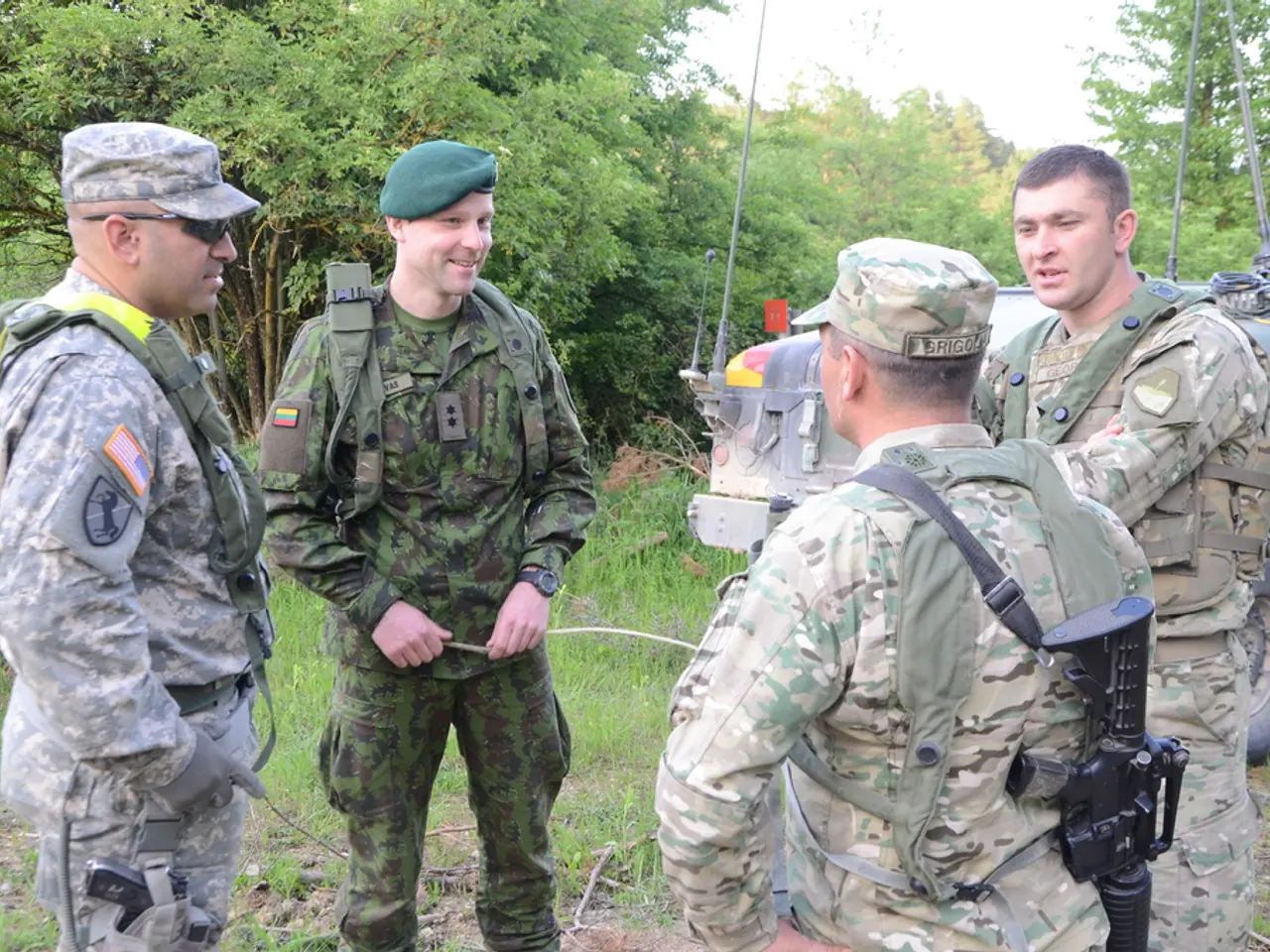Struggles in Russia: Insights from the Falling Attempts to Rebuild Dwindling Troops in Ukraine Conflict
In the ongoing conflict in Ukraine, the US Army is learning valuable lessons about reconstitution of forces and strategic planning. Here are some key takeaways and how the US Army can adapt its preparation of units, leaders, and staffs.
Lessons Learned from Russia's Reconstitution Problems
The challenges faced by Russia in Ukraine highlight the importance of adapting to modern warfare. Advanced technologies like ISR and precision strikes can significantly impact traditional military doctrines, and the US Army should focus on flexibility and innovation in its military strategies to counter similar challenges [1].
Russia's reliance on advanced technology to address its military challenges underscores the importance of investing in modern military technologies. The US Army should prioritize the integration of technologies like AI and unmanned systems to enhance its capabilities [1].
Russian military setbacks have been attributed to poor operational planning and training. The US Army should emphasize rigorous training and strategic planning to ensure that units are prepared for complex and dynamic battlefields [1].
Effective command structures and leadership are crucial in any conflict. The US Army should ensure clear lines of command and empower leaders to make strategic decisions, adapting to changing battlefield conditions [4].
International coordination is essential, as conflicts may involve multiple actors. The US Army should enhance its multinational training exercises and strategic planning to address such scenarios effectively [5].
Adaptation Strategies for the US Army
Units
Units should be trained to adapt quickly to new technologies and battlefield conditions. Incorporate AI, drones, and other modern technologies into unit operations to improve intelligence and combat effectiveness. Engage in joint exercises with international partners to enhance interoperability and prepare for coalition operations [6].
Leaders
Leaders should be trained to make informed decisions rapidly in complex environments. Encourage decentralized decision-making to respond swiftly to changing conditions. Provide training on cultural competencies to handle diverse international environments [7].
Staffs
Ensure clear and effective communication within staffs to facilitate timely decision-making. Foster collaboration between different branches and allies in strategic planning. Implement a culture of ongoing learning and evaluation to improve operational effectiveness [8].
Officers at the level of colonels and lieutenant colonels are integral in the effective integration, training, and cohesion of reconstituted and ad hoc formations. The US Army must be able to maintain operational momentum and rapidly integrate new personnel into bloodied formations [6].
At higher-echelon training events, an algorithm-based reduction of combat power of reconstituted forces within the simulation should be applied. The US Army should improve its reconstitution, regeneration, and ad hoc unit and personnel integration capabilities during field training exercises [6].
This should challenge leaders and planners to manage the fight tempo by considering the limitations of regenerated and reconstituted units' performance. Russia has suffered from severe battlefield leadership attrition during the conflict in Ukraine, with at least ten generals and 152 colonels and lieutenant colonels reported dead as of late November [3].
The substantial numbers of deaths of lieutenant colonels and colonels will have a more significant long-term effect on the Russian military's professional effectiveness [3]. Russia's difficulty with reconstitution and force regeneration, particularly in comparison to Ukraine's total mobilization, is instructive [2].
The Russian army's inability to properly integrate and regenerate cohesive, effective combat forces has resulted in tactical failures and operational setbacks [2]. The US Army must prepare its battlefield leadership and staffs for the stresses and demands associated with forming ad hoc units [9].
Scenarios should be adapted to force units to practice creating and employing ad hoc formations up to battalions. This could include mixing military occupational specialties to further imitate the stress of receiving less trained and less proficient individuals [9].
Russia's reconstituted and reformed units have demonstrated inferior results compared to the capabilities of the initial forces [2]. The reduced and reconstituted units' condition and performance contributed to the successful Ukrainian Kharkiv counteroffensive [10].
By focusing on these areas, the US Army can better prepare itself to face future conflicts and avoid similar pitfalls experienced by Russia in Ukraine.
[1] The National Interest, "Russia's Military Struggles in Ukraine: Lessons for the US Army," 2015. [2] War on the Rocks, "The Russian Army's Challenge in Ukraine: Reconstitution, Regeneration, and Integration," 2015. [3] The Washington Post, "Russia's top military commanders are dying in Ukraine at an alarming rate," 2014. [4] The Diplomat, "The Importance of Leadership in War: Lessons from Ukraine," 2015. [5] The National Interest, "Russia's Military Struggles in Ukraine: Lessons for the US Army - Part II," 2015. [6] The National Interest, "Preparing for a Modern War: Lessons from Ukraine for the US Army," 2015. [7] The Washington Post, "The U.S. military needs a new way to prepare its leaders for the future," 2016. [8] The National Interest, "The U.S. Army Needs to Get Better at Command and Control," 2016. [9] The Washington Post, "The U.S. military is preparing for a new kind of war," 2017. [10] The National Interest, "The Russian Army's Challenge in Ukraine: Lessons for the US Army - Part III," 2015.
- The US Army should prioritize flexibility and innovation in its military strategies to counter the challenges seen in modern warfare, as demonstrated by Russia's struggles in Ukraine.
- Effective command structures and leadership are crucial in any conflict, and the US Army should ensure clear lines of command and empower leaders to make strategic decisions, adapting to changing battlefield conditions.
- The US Army should prioritize the integration of technologies like AI and unmanned systems to enhance its capabilities, similar to the reliance on advanced technology observed in Russia during the conflict in Ukraine.
- In joint exercises with international partners, units should be trained to adapt quickly to new technologies and battlefield conditions to improve intelligence and combat effectiveness, as a response to the lessons learned from Russia's reconstitution problems in Ukraine.





